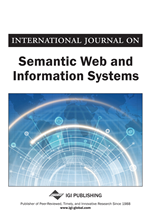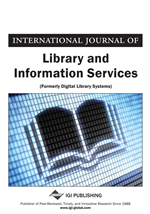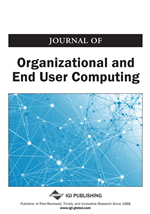Search
Results: 5205
Genome-Wide Association Studies of a Broad Spectrum of Antisocial Behavior.
Jorim J Tielbeek, Ada Johansson, Tinca JC Polderman, Marja-Riitta Rautiainen, Philip Jansen, Michelle Taylor, Xiaoran Tong, Qing Lu, Alexandra S Burt, Henning Tiemeier, Essi Viding, Robert Plomin, Nicholas G Martin, Andrew C Heath, Pamela AF Madden, Grant Montgomery, Kevin M Beaver, Irwin Waldman, Joel Gelernter, Henry R Kranzler, Lindsay A Farrer, John RB Perry, Marcus Munafò, Devon LoParo, Tiina Paunio, Jari Tiihonen, Sabine E Mous, Irene Pappa, Christiaan de Leeuw, Kyoko Watanabe, Anke R Hammerschlag, Jessica E Salvatore, Fazil Aliev, Tim B Bigdeli, Danielle Dick, Stephen V Faraone, Arne Popma, Sarah E Medland, Danielle Posthuma, Broad Antisocial Behavior Consortium collaborators
Nov 21, 2018
IMPORTANCE: Antisocial behavior (ASB) places a large burden on perpetrators, survivors, and society. Twin studies indicate that half of the variation in this trait is genetic. Specific causal genetic variants have, however, not...
Callous-Unemotional Traits and Antisocial Behavior in South Korean Children
Callous-unemotional (CU) traits have been associated with atypical responses to reward and punishment cues, with evidence suggesting that such traits may shape caregiver use of reward and punishment practices over time. To date...
Callous-Unemotional Traits and Antisocial Behavior in South Korean Children
Callous-unemotional (CU) traits have been associated with atypical responses to reward and punishment cues, with evidence suggesting that such traits may shape caregiver use of reward and punishment practices over time. To date...
Larger left hippocampal presubiculum is associated with lower risk of antisocial behavior in healthy adults with childhood conduct history
Abstract Conduct Disorder (CD) is defined as aggressive, antisocial, and rule-breaking behavior during childhood. It is a major risk factor for developing antisocial personality disorder (ASPD) in...
AmirHussein Abdolalizadeh, Kamyar Moradi, Mohammad Amin Dabbagh Ohadi, Fatemeh Sadat Mirfazeli, Reza Rajimehr
Apr 15, 2023
<em>Homo homini lupus</em>? Explaining antisocial punishment
Punishing group members who parasitize their own group’s resources is an almost universal human behavior, as evidenced by multiple cross-cultural and theoretical studies. Recently, researchers in social and behavioral sciences...
<em>Homo homini lupus</em>? Explaining antisocial punishment
Punishing group members who parasitize their own group’s resources is an almost universal human behavior, as evidenced by multiple cross-cultural and theoretical studies. Recently, researchers in social and behavioral sciences...
The International Human Epigenome Consortium
The International Human Epigenome Consortium (IHEC) coordinates the generation of a catalog of high-resolution reference epigenomes of major primary human cell types. The studies now presented (see the Cell Press IHEC web portal...
Gene Ontology Consortium
Gene Ontology Consortium
May 06, 2020
The Gene Ontology (GO; http://www.geneontology.org) is a community-based bioinformatics resource that supplies information about gene product function using ontologies to represent biological knowledge. Here we describe...
ImmUniverse Consortium
Stefania Vetrano, Gerben Bouma, Robert J Benschop, Thomas Birngruber, Antonio Costanzo, GRAM D'Haens, Loredana Frasca, Rainer Hillenbrand, Lars Iversen, Claus Johansen, Arthur Kaser, Hans JPM Koenen, Christa Noehammer, Laurent Peyrin-Biroulet, Jeroen Raes, Leonardo Ricotti, Philip Rosenstiel, Venkata P Satagopam, Stefan Schreiber, Severine Vermeire, Andreas Wollenberg, Stephan Weidinger, Daniel Ziemek, Silvio Danese, ImmUniverse Consortium
Jan 04, 2023
Immune mediated inflammatory diseases (IMIDs) are a heterogeneous group of debilitating, multifactorial and unrelated conditions featured by a dysregulated immune response leading to destructive chronic inflammation. The immune...
Susceptibility to prosocial and antisocial influence in adolescence following mindfulness training.
Jovita T Leung, Blanca Piera Pi-Sunyer, Saz P Ahmed, Lucy Foulkes, Cait Griffin, Ashok Sakhardande, Marc Bennett, Darren L Dunning, Kirsty Griffiths, Jenna Parker, Willem Kuyken, J Mark G Williams, Tim Dalgleish, Sarah-Jayne Blakemore
Apr 17, 2023
Mindfulness training programmes have shown to encourage prosocial behaviours and reduce antisocial tendencies in adolescents. However, less is known about whether training affects susceptibility to prosocial and antisocial...
Published by: Infant and child development
Exploring the genetic correlations of antisocial behaviour and life history traits.
Jorim J Tielbeek, JC Barnes, Arne Popma, Tinca JC Polderman, James J Lee, John RB Perry, Danielle Posthuma, Brian B Boutwell
Dec 19, 2018
UNLABELLED: Prior evolutionary theory provided reason to suspect that measures of development and reproduction would be correlated with antisocial behaviours in human and non-human species. Behavioural genetics has revealed that...
Susceptibility to prosocial and antisocial influence in adolescence.
S Ahmed, L Foulkes, JT Leung, C Griffin, A Sakhardande, M Bennett, DL Dunning, K Griffiths, J Parker, W Kuyken, JMG Williams, T Dalgleish, SJ Blakemore
Sep 11, 2020
INTRODUCTION: Adolescents are particularly susceptible to social influence and previous studies have shown that this susceptibility decreases with age. The current study used a cross-sectional experimental paradigm to...
Research Review
BACKGROUND:
The developmental taxonomic theory proposes that there are two subtypes of antisocial behaviour. The first is a neurodevelopmental disorder which emerges in early childhood and follows a life-course...
The developmental taxonomic theory proposes that there are two subtypes of antisocial behaviour. The first is a neurodevelopmental disorder which emerges in early childhood and follows a life-course...
The SPECTRUM Consortium
M Horton, PR Perman-Howe, C Angus, J Bishop, I Bogdanovica, A Brennan, J Britton, LS Brose, J Brown, J Collin, M Dockrell, N Fitzgerald, S Friel, D Gillespie, AB Gilmore, SE Hill, C Knai, T Langley, S Martin, A McNeill, G Moore, MR Munafò, RL Murray, M Opazo Breton, J Pearce, M Petticrew, G Reid, D Robson, H Rutter, L Shahab, N Shortt, K Smith, K Syrett, L Bauld
Dec 31, 2021
The main causes of non-communicable diseases (NCDs), health inequalities and health inequity include consumption of unhealthy commodities such as tobacco, alcohol and/or foods high in fat, salt and/or sugar. These exposures...
The SPECTRUM Consortium
M Horton, PR Perman-Howe, C Angus, J Bishop, I Bogdanovica, A Brennan, J Britton, LS Brose, J Brown, J Collin, M Dockrell, N Fitzgerald, S Friel, D Gillespie, AB Gilmore, SE Hill, C Knai, T Langley, S Martin, A McNeill, G Moore, MR Munafò, RL Murray, M Opazo Breton, J Pearce, M Petticrew, G Reid, D Robson, H Rutter, L Shahab, N Shortt, K Smith, K Syrett, L Bauld
Dec 31, 2021
The main causes of non-communicable diseases (NCDs), health inequalities and health inequity include consumption of unhealthy commodities such as tobacco, alcohol and/or foods high in fat, salt and/or sugar. These exposures...
Research Review
BACKGROUND:
The developmental taxonomic theory proposes that there are two subtypes of antisocial behaviour. The first is a neurodevelopmental disorder which emerges in early childhood and follows a life-course...
The developmental taxonomic theory proposes that there are two subtypes of antisocial behaviour. The first is a neurodevelopmental disorder which emerges in early childhood and follows a life-course...
Stability Analysis of EPC Consortium Cooperation Based on Evolutionary Game
Consortium contracting is a contracting model that China encourages and advocates. Due to the interest drive, members within the consortium are very prone to negative cooperation and midway withdrawal, which hinders the healthy...
Published by: IGI Global Scientific Publishing
The Typhoid Vaccine Acceleration Consortium (TyVAC): Vaccine effectiveness study designs
Typhoid fever is estimated to cause between 11.9-26.9 million infections globally each year with 129,000-216,510 deaths. Access to improved water sources have reduced disease incidence in parts of the world but the use of...
Disease model discovery from 3,328 gene knockouts by The International Mouse Phenotyping Consortium.
Terrence F Meehan, Nathalie Conte, David B West, Julius O Jacobsen, Jeremy Mason, Jonathan Warren, Chao-Kung Chen, Ilinca Tudose, Mike Relac, Peter Matthews, Natasha Karp, Luis Santos, Tanja Fiegel, Natalie Ring, Henrik Westerberg, Simon Greenaway, Duncan Sneddon, Hugh Morgan, Gemma F Codner, Michelle E Stewart, James Brown, Neil Horner, International Mouse Phenotyping Consortium, Melissa Haendel, Nicole Washington, Christopher J Mungall, Corey L Reynolds, Juan Gallegos, Valerie Gailus-Durner, Tania Sorg, Guillaume Pavlovic, Lynette R Bower, Mark Moore, Iva Morse, Xiang Gao, Glauco P Tocchini-Valentini, Yuichi Obata, Soo Young Cho, Je Kyung Seong, John Seavitt, Arthur L Beaudet, Mary E Dickinson, Yann Herault, Wolfgang Wurst, Martin Hrabe de Angelis, KC Kent Lloyd, Ann M Flenniken, Lauryl MJ Nutter, Susan Newbigging, Colin McKerlie, Monica J Justice, Stephen A Murray, Karen L Svenson, Robert E Braun, Jacqueline K White, Allan Bradley, Paul Flicek, Sara Wells, William C Skarnes, David J Adams, Helen Parkinson, Ann-Marie Mallon, Steve DM Brown, Damian Smedley
Oct 22, 2020
Although next-generation sequencing has revolutionized the ability to associate variants with human diseases, diagnostic rates and development of new therapies are still limited by a lack of knowledge of the functions and...
Information Management of Low-Carbon Travel Behavior
Low-carbon travel is widely recognized as an important strategy for reducing energy consumption, mitigating pollution emissions, and alleviating traffic congestion. This study utilizes a sample of 2167 residents from four...
Published by: IGI Global Scientific Publishing
Proposing a Library Consortium Model for National Development in Zimbabwe
Collence Chisita
Jul 01, 2021
Globally library cooperation and collaboration is transforming the scholarship landscape as academic libraries battle to survive amidst escalating costs of subscriptions. Zimbabwe is no exception to this phenomenon as evidenced...
Published by: IGI Global Scientific Publishing
Revisiting How Perceived Uncertainty and Herd Behavior Influence Technology Choice
Understanding how herd behavior occurs in the information systems context is important because such behavior influences many choice decisions, is the reason for some decision anomalies, and explains the reasons behind the rise...
Published by: IGI Global Scientific Publishing
Meningococcal carriage in the African meningitis belt.
MenAfriCar consortium
Jan 23, 2018
A meningococcal serogroup A polysaccharide/tetanus toxoid conjugate vaccine (PsA-TT) (MenAfriVac(™) ) is being deployed in countries of the African meningitis belt. Experience with other polysaccharide/protein conjugate vaccines...
Africa MenAfriCar Neisseria meningitidis meningococcal carriage Meningococcal Vaccines meningococcus Adolescent Adult Africa Carrier State Child Child Preschool Cross-Sectional Studies Enzyme-Linked Immunosorbent Assay Epidemics Humans Immunization Programs Infant International Cooperation Meningitis Meningococcal Meningococcal Vaccines Neisseria meningitidis Serogroup A Pharynx Pilot Projects Polymerase Chain Reaction Program Evaluation Specimen Handling vaccines Conjugate Young Adult
Adrenocortical Activity and Aggressive Behavior in Children
Most research on aggression and delinquency concentrates on risk factors. There has been less attention for protective factors and mechanisms, in particular with regard to biosocial influences. Based on theories of autonomous...
ICC-dementia (International Centenarian Consortium - dementia)
Henry Brodaty, Claudia Woolf, Stacy Andersen, Nir Barzilai, Carol Brayne, Karen Siu-Lan Cheung, Maria M Corrada, John D Crawford, Catriona Daly, Yasuyuki Gondo, Bo Hagberg, Nobuyoshi Hirose, Henne Holstege, Claudia Kawas, Jeffrey Kaye, Nicole A Kochan, Bobo Hi-Po Lau, Ugo Lucca, Gabriella Marcon, Peter Martin, Leonard W Poon, Robyn Richmond, Jean-Marie Robine, Ingmar Skoog, Melissa J Slavin, Jan Szewieczek, Mauro Tettamanti, José Viña, Thomas Perls, Perminder S Sachdev
Sep 29, 2016
BACKGROUND: Considerable variability exists in international prevalence and incidence estimates of dementia. The accuracy of estimates of dementia in the oldest-old and the controversial question of whether dementia incidence...
|
|< |
< |
1 |




